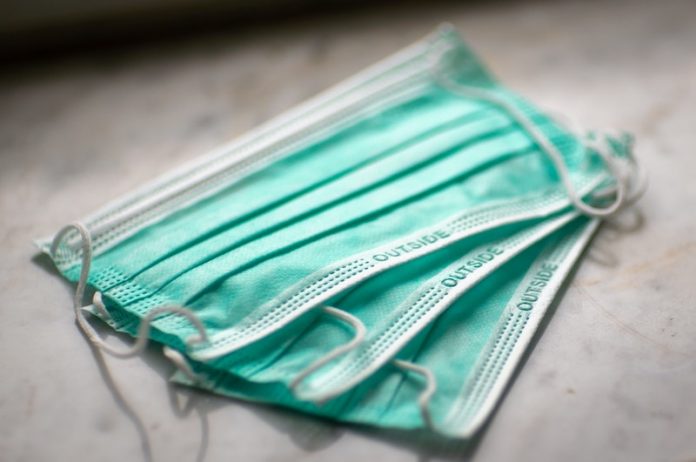
It’s intuitive and scientifically shown that wearing a face-covering can help reduce the spread of the novel coronavirus that causes COVID-19.
But in a new study, researchers found not all masks are created equal.
The research was conducted by a team at the University of Arizona and elsewhere.
In the study, the team assessed the ability of a variety of nontraditional mask materials to protect a person from infection after 30 seconds and after 20 minutes of exposure in a highly contaminated environment.
When the researchers compared wearing masks to wearing no protection during 20-minute and 30-second exposures to the virus, they found that infection risks were reduced by 24-94% or by 44-99% depending on the mask and exposure duration.
Risk reduction decreased as exposure duration increased.
They found N99 masks, which are even more efficient at filtering airborne particles than N95 masks, are obviously one of the best options for blocking the virus, as they can reduce average risk by 94-99% for 20-minute and 30-second exposures, but they can be hard to come by, and there are ethical considerations such as leaving those available for medical professionals.
The next best options are N95 and surgical masks and, perhaps surprisingly, vacuum cleaner filters, which can be inserted into filter pockets in cloth masks.
The vacuum filters reduced infection risk by 83% for a 30-second exposure and 58% for a 20-minute exposure.
Of the other nontraditional materials evaluated by the researchers, tea towels, cotton-blend fabrics and antimicrobial pillowcases were the next best for protection.
Scarves, which reduced infection risk by 44% after 30 seconds and 24% after 20 minutes, and similarly effective cotton t-shirts are only slightly better than wearing no mask at all.
The team says one big component of risk is how long you’re exposed. They compared the risk of infection at both 30 seconds and 20 minutes in a highly contaminated environment.
Other conditions that impact the risk of infection are the number of people around you and their distance from you.
The size of virus-transporting droplets from sneezes coughs or even speech is also a very important factor.
Larger, heavier droplets carrying the virus drop out of the air faster than smaller, lighter ones. That’s one reason distance helps reduce exposure.
The study also showed that the more time a person spends in an environment where the virus is present, the less effective a mask becomes.
Masks protect the wearer and others in a number of different ways. There are two “intuitive ways” that masks filter larger aerosols: mechanical interception and inertial impaction.
The team also said it’s important for a mask to have a good seal that pinches at the nose, and she noted that people shouldn’t wear a mask beneath the nose or tuck it under the chin when not in use.
One author of the study is Amanda Wilson, an environmental health sciences doctoral candidate.
The study is published in the Journal of Hospital Infection.
Copyright © 2020 Knowridge Science Report. All rights reserved.



